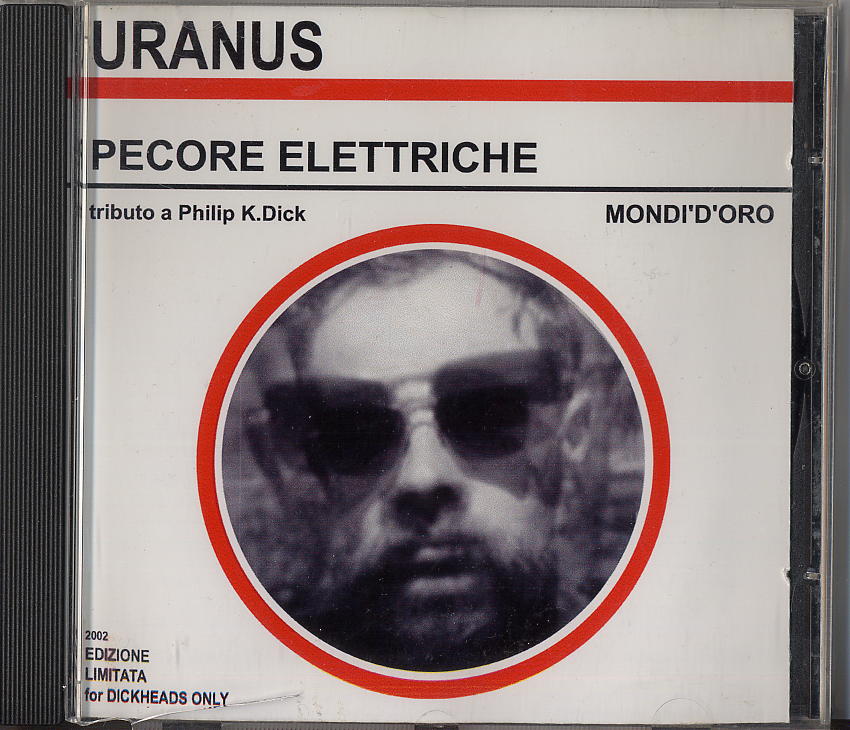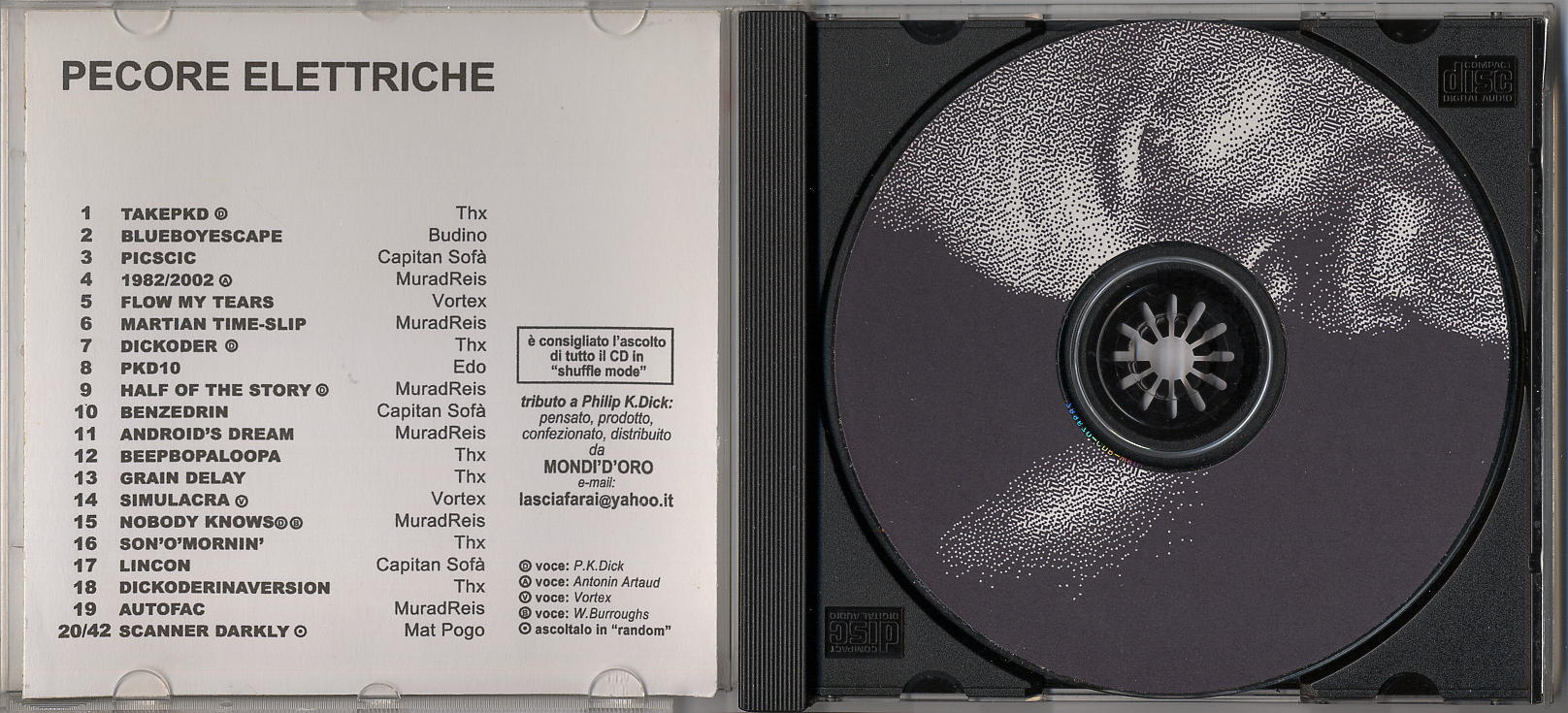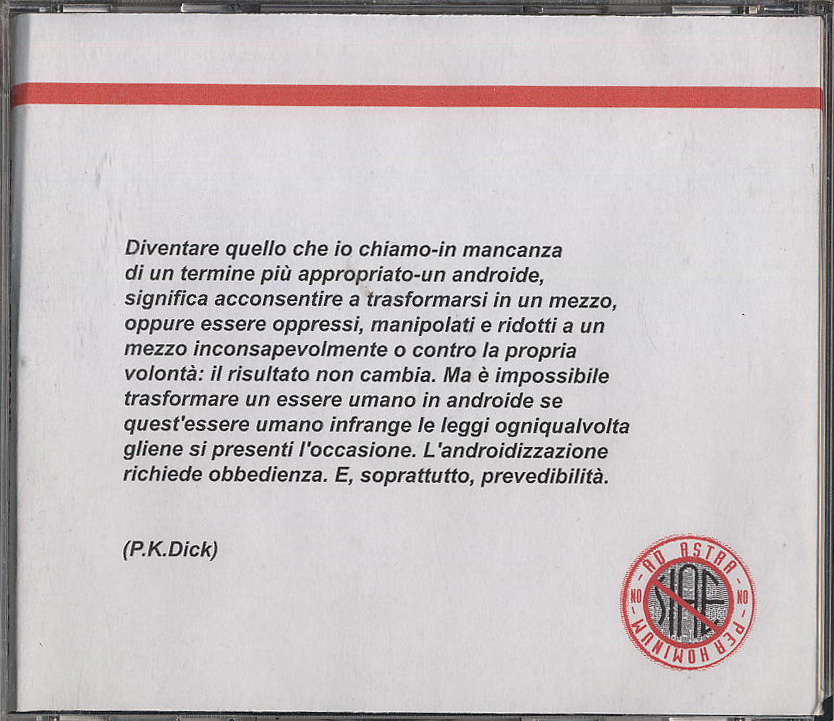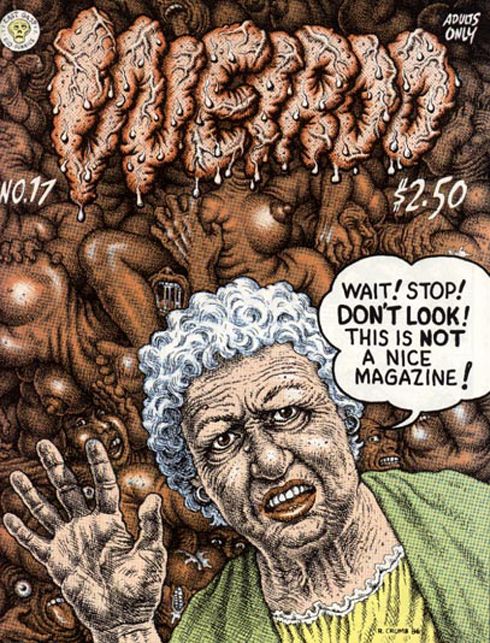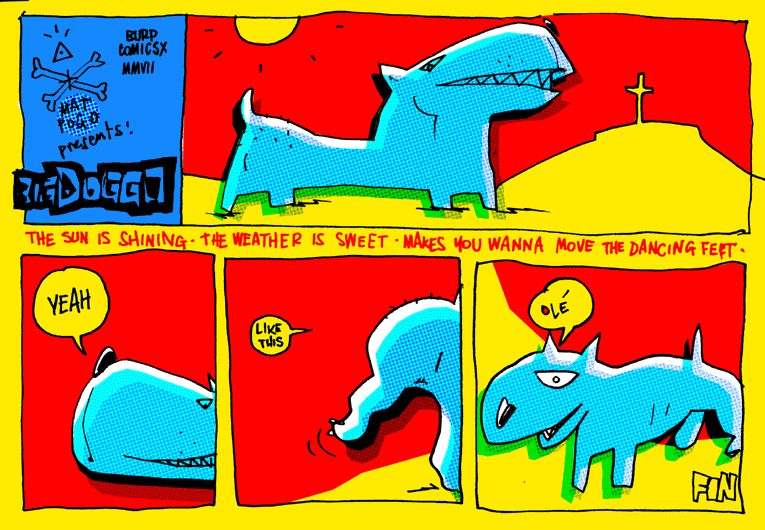Rumore / Musica : presse di vinile
Wednesday, January 30th, 2008I seguenti video mostrano il funzionamento di alcune macchine per il pressaggio dei dischi in vinile.
Filmed at Disco-Press, Belgium. September 25 2002
Fabricação de discos de vinil na Polysom, a última e única do Brasil, em Belford Roxo.
This promotional short for Irving Mills’ short-lived Master
and Variety labels not only gives us a glimpse of Ellington and his
band in the actual Master/Variety studios (as opposed to a soundstage
set), but is one of the very few film accounts of how records were
recorded, plated and pressed in the long-ago age of analog, shellac and
78 rpm. Narration is provided by pioneer radio announcer Alois Havrilla.
Video for Dutch artist Floris, shot on location in Europe’s biggest vinyl factory in Haarlem.
Noise music
From Wikipedia, the free encyclopedia
Noise( music ) is music composed of non-traditional musical elements, and lacks the structure associated with Western Music. A noise musician may incorporate, for example; manipulated recordings, static, feedback, live machine sounds, circuit bent instruments, non-musical vocal elements, or anything that makes a sound, etc.
Practitioners themselves do not generally refer to it as "Noise Music"; they just call it "Noise", tacking the term "music" on the end is generally only done when talking to those unfamiliar with the genre
|
Contents [hide] |
[edit] History
[edit] Luigi Russolo
Luigi Russolo, a Futurist painter of the very early 20th century, was perhaps the first Noise artist. His 1913 manifesto L’Arte de Rumori, translated as The Art of Noises,
stated that the industrial revolution had given modern men a greater
capacity to appreciate more complex sounds. Russolo found traditional
melodic music confining and envisioned noise music as its future
replacement. He designed and constructed a number of noise-generating
devices called Intonarumori and assembled a noise orchestra to perform with them. A performance of his Gran Concerto Futuristico
(1917) was met with strong disapproval and violence from the audience,
as Russolo himself had predicted. None of his intoning devices have
survived, though recently some have been reconstructed and used in
performances. Although Russolo’s works bear little resemblance to
modern noise music, his pioneering creations cannot be overlooked as an
essential stage in the evolution of this genre, and many artists are
now familiar with his manifesto.
Other early composers
Composer Arnold Schoenberg‘s proclaimed "Emancipation of the dissonance"
(the idea that music could just as well be based upon dissonance as
consonance) in the early 20th century was probably the origin of noise
music. By the 1920s, composers (in particular Edgard Varèse and George Antheil)
began to use early mechanical musical instruments–such as the player
piano and the siren–to create music that referenced the noise of the
modern world. In the 1930s, under the influence of Henry Cowell in San Francisco, Lou Harrison and John Cage
began composing music for "junk" percussion ensembles — scouring
junkyards and Chinatown antique shops for appropriately tuned brake
drums, flower pots, gongs, and more. Cage started his Imaginary Landscape series in 1939, which combined elements like recorded sound, percussion, and (in the case of Imaginary Landscape #4) twelve radios. After the second world war, other composers (including G.M. Koenig, Iannis Xenakis, and Karlheinz Stockhausen) started to experiment with sound synthesis, tape machines and radio equipment to produce electronic music, often with very noisy sounds. Much of this music has proven influential on the creators of noise music.
With the advent of the radio, Pierre Schaeffer coined the term musique concrete
to refer to the peculiar nature of sounds on tape, separated from the
source that generated them initially. His ideas about non-referential
sounds take their most extreme form in noise music, which often blurs
or obscures the actions which produced the sounds while also suggesting
the physicality of sound itself.
The sudden affordability of home recording technology in the 1970s with the simultaneous influence of punk rock
established a new aesthetic and instigated what is commonly referred to
as noise music today. When anyone could produce noise, and anyone could
record and distribute it, then noise music provided a way for any
person (artist or non-artist) to experiment with sound as a painter
might with visual material.
[edit] Boyd Rice
American archivist and writer Boyd Rice has been a seminal influence on Noise music. Starting in 1975, Rice began experimenting with the possibilities of pure sound. In his live performances, he attached an electric fan to an electric guitar and also used an electric shoe polisher
as an instrument. He created extremely loud, cascading walls of noise
and played pieces of recorded conversations, news reports, and music
just beneath the threshold of comprehensibility. Rice has created works
that combine brutal soundscapes with various poetics. He has also
structured noise elements into harmonious, rhythmic pieces that defy
easy categorization.
[edit] Japan
Originally influenced by the sounds of European bands like Whitehouse and the Italian non-musician Maurizio Bianchi/M.
B., Japanese noise artists pushed this approach to an extreme of
loudness and density, which in turn became a major influence on western
noise bands. Sometimes known as "Japanoise"
(a pun not just in English, but even in Japanese: ジャパノイズ ), it is
usually associated with "harsh" characteristics including walls of white noise, non-linear pulses, arrhythmic beats, distorted sound loops, unintelligible dialogue, and sirens.
Since the late 1980s this Japanese style has been probably the most
prolific and noticeable part of the Noise Music scene. Likewise the
popularity and prolific output of musicians such as the aforementioned
Noise Music figurehead/posterboy Merzbow, C.C.C.C. and other names like KK Null, Masonna, The Gerogerigegege and Hanatarash (founded by Boredoms frontman, Yamatsuka Eye)
have made Japan something of a Mecca for many noise fans. In terms of
sales, Noise music is not particularly more popular in Japan than in
Europe or America. However, there is perhaps a higher level of
recognition from crossover with mainstream genres and events, such as
fashion shows or dance performances with music by noise artists, and a
comparatively large number of live noise performances are held in Tokyo.
Recently the noise scene has given birth to a form of freely improvised electronic music known by the press as onkyo-kei, with leading lights including the aforementioned Sachiko M.
[edit] Albums and non-noise influences
Lou Reed‘s double-LP album Metal Machine Music released in 1975 is an early, well-known example of noise music.
It is very likely that Reed was aware of the electronic drone music produced in the mid-60s by his Velvet Underground cohort John Cale with artists such as Tony Conrad and LaMonte Young (see the CD release of Inside the Dream Syndicate Volume 1: Day of Niagara).
In 1988, RRRecords released a series of anti-records in which ordinary vinyl LPs and, in some cases, flexidiscs were physically transformed into noise records.
[edit] Mixing of forms
In Canada, the Nihilist Spasm Band has been performing acoustic-based noise music since 1965. The aptly named noise rock fuses rock
to noise, usually with recognisable "rock" instrumentation, but with
greater use of distortion and electronic effects, varying degrees of
atonalism, improvisation and white noise. One of the best-known bands of this genre is Boredoms. This style is more like a "traditional" band compared to abstract or electronic noise and sometimes bears a similarity to grindcore. The name noisecore is also used to refer to noise-influenced hardcore techno or rock.
Fans of the genre sometimes distinguish between "harsh noise", the more well-known super-dense and abrasive sounds of Merzbow, Masonna
and similar artists, and other loose sub-genres like "rhythmic noise",
"power electronics", "free noise" and so on. Confusingly, some
industrial techno sub-genres have very similar names, i.e. power noise. Power noise is comparatively conventionally musical, and is not to be confused with power electronics, the synthesizer based subgenre of abstract and experimental noise performed by Whitehouse.
Free noise came equally out of the free jazz traditions, or at least
its outer boundaries such as Albert Ayler and John Zorn, as its harsh
noise influences and closely aligns itself with similar methods of
long, interactive improvisations between players; examples include Borbetomagus and WRONG.
One possible influence of noise music has been to change the way of
thinking about what is "musical" or "unmusical" noise, and recently
many different genres, such as techno and hip-hop, include some kinds
of sounds that could be viewed as "noise".
[edit] Methods and Inspirations
In much the same way the early modernists were inspired by primitive
art, some contemporary noisicians are excited by the archaic audio
technologies, such as wire-recorders, the 8-track cartridge, and vinyl
records. For instance, some still choose to release their work on
vinyl. Many artists not only build their own noise-generating devices,
but even their own specialized recording equipment[citation needed].
Many performances by noise artists are extremely loud and can be
near-deafening. The frequencies used by many are both shrieking and
overpowering.
David Jackman
said his first noise performance, albeit unintentional, was when he was
14 years old. He and his father demolished an old piano using an axe
and hammer. Jackman called it "a huge racket".[citation needed]
An outburst of emotion is the effect given by the performances of the group C.C.C.C., headed by former Japanese porn-star Mayuko Hino. One senses a socio-political fetishism with the work of Con-Dom, formed by Mike Dando to explore the many sides of personal faith. In a sensuous merging of body and machine, the French sound-composer Manon Anne Gillis
gives birth to her noise. Intimately demonstrated by a 1995
performance, in which she kept pulling out, from under her dress,
strands of audio tape accompanied by the sound of recorded material
being yanked over the playback heads of a tape-deck.
Many noise artists are fixated on either one sound, or one type of sound. A.M.K.
uses, as his only sound source, the montage. His montages are
flexi-discs that he cuts up and recombines and then plays on regular
turntables. Even his CD releases sound just like broken records. A.M.K.
started to cut up readymade flexi-discs in 1986. Eleven years later he
would start to record and release his own limited-edition flexi-discs
for the sole purpose of montaging them.
Zipper Spy
is an avid collector of zippers. She also loves the sound zippers make.
Amplified zippers may not be the only sound source she plays with, but
zippers are nearly always the dominant ingredient in her compositions.
When asked why she loves zippers so much, she simply replied; "I hear
zippers in everything."[citation needed]
Others base their sound on the type of audio equipment they build for themselves. Both Chop Shop and Speculum Fight are examples of this approach. Chop Shop was formed by Scott Konzelmann.
Konzelmann builds speakers. Since ’87 he’s been developing his speaker
constructions to focus the listener into linking physical sounds
through visible sources[1]. Konzelmann thinks of it as a kind of ventriloquism.[citation needed]
Speculum Fight, otherwise known as Damion Romero,
presumes to deal with tones and frequencies that are intended to be
seductive to the listener. To achieve these soundscapes, Romero uses
custom-made microphones, and antique audio test-equipment re-wired as
feedback generators.
The noise-poet blackhumour, who has been active since the mid-80’s[citation needed], uses only recordings of human voice. Some noise critics[citation needed]
have described blackhumour’s work as a hybrid of noise and literature.
However, blackhumour has stated on many occasions that he sees his
noise as an extension of literature. Godzilla, not literature, is the
inspiration for Daniel Menche‘s
recent interest in human voice. Since 1988 Menche has carefully crafted
noise from sound sources like his heart, lungs, chest, and fist.
Kimihide Kusafuka, better known as K2[citation needed],
originally came onto the scene in 1984, just to disappear from it a few
years later. He returned in 1993 after graduated as a pathologist. K2
sees no difference between the act of making noise and the act of
science. K2 says he practices a kind of alchemy through his noise. He
aims to metamorphosize himself with both the insight he gets from his
scientific experiments, and the emotional strength he gains from
performing and listening to noise. "Noise..", as K2 puts it, "can not
be refused by either ears and heads!"[citation needed]
GX Jupitter-Larsen
enjoyed listening to the scratches etched across the grooves of a
record much more than the recorded material stamped onto it. Thus the
self-titled, silent vinyl record "The Haters",
which he released in 1983, comes with instructions that informs the
holder that they must first complete the record by scratching it before
it can be listened to.
[edit] References
- ^ Chop Shop (23five.org). Retrieved on 2008–01-14.
[edit] See also
- Harsh noise
- List of noise musicians
- Japanoise
- List of Japanoise artists
- Free improvisation
- Sonic artifact
- Made one shot
[edit] External links
- alphamanbeast’s noise directory
An information base with links to artists and labels of the broader
noise music genre, as well as miscellaneous related resources. - Full With Noise: Theory and Japanese Noise Music Essay about Japanese noise and the theory behind noise.
- Torben Sangild: "The Aesthetics of Noise"
- Noiseweb
- Alternate list of noise bands created by noise artists for noise artists
- Russolo’s Intonarumori
| [hide]
|
|---|
| Musique concrète – Noise |
Categories: Articles that may contain original research since September 2007 | Articles lacking sources from August 2007 | All articles lacking sources | All articles with unsourced statements | Articles with unsourced statements since June 2007 | Articles with unsourced statements since January 2008 | Industrial music | Japanese music | Noise music
da http://gpinformation.blogspot.com/2007/10/book-paul-hegarty-noise-music-history.html
Paul Hegarty: “Noise/Music: A History”
Paul Hegarty is a philosophy lecturer at University College Cork, with an interest in what he wouldn’t call the genre of noise (“music”). A book either giving a history of noise’s development, or an exegesis of its socio-philosophical implications would have been interesting. Unfortunately, this is neither.
The opening chapter sets off at a fine intellectual gallop "for Kant … for Russolo. for Cage… Attali too. As… Ardono" – this is from a single page! Elsewhere, Nietzsche, Heidegger, Bataille, Hegel et al. All appear… a little too like the first attempt at a doctorial thesis, then in later chapters citation either runs out completely or revolves around another of Hegarty’s interests – Adorno on Jazz, but not the Jazz here, (and why Jazz?). Bataille on Sade. There are inclusions – too many: Improv, Punk, The Grateful Dead, Prog Rock! and self confessed notable exclusions – and others not Reich’s pendulum music Lou Reed’s “Metal Machine”, The Gamelan, Harry Partch. The whole New Zealand phenomenon.
How Hegarty gets away with this derives from two of his arguments, first that anything can potentially be called "noise", as in his long example of Yes’s Tales of Topographic Oceans – well yes! –, but no mention then of Abba or Mantovarni. And secondly, that the avant-garde in music has often been described pejoratively in its beginnings as “noise”, or, as in the famous case of Sir Thomas Beecham, as shit – but this is beside the point. The point being "noise" applies to a particular phenomenon in music as an identifier and not a critique (Pop Art is not Pop Art because it is or was “popular”).
We know, and Hegarty certainly does, that such games can be played with definitions – this is Wittgenstein’s famous “game”. To conflate the genre of noise, the “thing” with the same word applied as an attribute or subjective opinion of any music or sound is something of what I would call an ontological mistake of the first order. Or is it a strategy because it allows Hegarty to discuss any artist he wants to.
For instance, the space given to Cage and his silences – relevant by being irrelevant to the point of being a binary opposite – he might say? When after several chapters we get to actual Japnoise, and a further chapter on Merzbow, the irrelevance of much what went before becomes obvious. But here Hegarty fails to deliver what the patient reader might want – might expect, a detailed account – it’s all apologies. «This chapter will not so much deal with the specificity of noise music from Japan».
He then goes on to a consideration of McLuchan on globalization, to raise the question: «what kind of world is in or behind world music». «World music»? I’m confused? This is a very confused history, and one which fails to pick up on the development of noise from Japan back to the USA and Europe, where it has been taken up as a definite genre, having its own festivals, labels, retail outlets both on and off-line, and even now its own proto-industry of designed and manufactured devices marketed by such as noisefx.com.
Widespread broadcasting on US University campus’s and across Europe as radio and webcasts, of dedicated websites to the promotion of noise labels such as PacRec, artists like Wiesse and The Rita.
As a history the book this is chronology flawed, as a serious study the attempt to buttress certain artists (irrelevant to the genre in many cases) by relationships to certain philosophers seems strained. The book lacks structure and appears more like a set of articles, some written in an academic style, others not.
A detailed chronology, discology would have been useful. Works are referred to where perhaps a copy of the score might have been illuminating, even some pictures would help what is aesthetically a remarkably dull book. An accompanying CD or at least pointers to MP3s on an associated site would also have helped. I think that there is a sufficient body of material, artists, events, labels, online and actual retail outlets, manufacturers, chronologies and general dissemination of what can be called noise to warrant a study which does not piggy back on to it philosophical critiques of Cage, Jazz, Prog Rock, Punk and Rap, amongst others. Unfortunately, that’s what Hegarty appears to do.
Maybe we can justify such irrelevance in this communication (of a history of noise music) as being itself yet another example of “noise”, but the genre of noise music is nothing to do with the unwarranted junk found in communication, or if it is, how is it, and why is it?
[Book by Continuum > hagshadow@hotmail.com]
Your friendly neighborhood THX 1138
xxx
